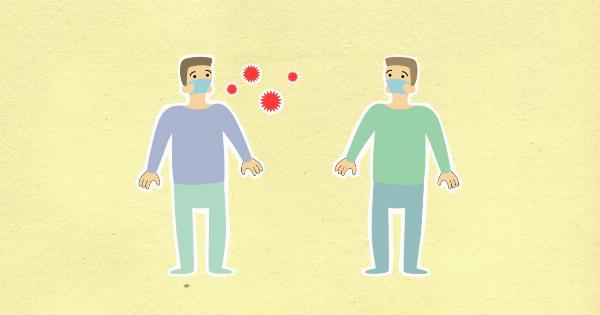The flu, also known as influenza, is a highly contagious illness caused by a virus that infects the respiratory system. It spreads through droplets released in the air when an infected person talks, coughs, or sneezes.
The virus can also survive on surfaces and objects, making it easy to contract the illness by touching contaminated surfaces and then touching your nose, mouth, or eyes.
What is the Flu Virus?
The flu virus belongs to the Orthomyxoviridae family and is divided into three main types, designated as A, B, and C. Type A is the most common and severe, causing seasonal flu outbreaks and global pandemics.
Type B is less severe, causing local outbreaks, while type C is mild and rarely reported.
The flu virus has two surface proteins called hemagglutinin (H) and neuraminidase (N), which are used to classify the different strains.
Currently, there are 18 recognized H subtypes and 11 N subtypes, leading to a wide range of flu viruses with varying virulence.
How Does the Flu Virus Spread?
The flu virus spreads through respiratory droplets released when an infected person talks, coughs, or sneezes. These droplets can travel up to 6 feet and infect people who are nearby.
The virus can also survive on surfaces and objects, such as doorknobs, phones, and keyboards, for up to 48 hours.
When a person touches a contaminated surface or object and then touches their nose, mouth, or eyes, they can contract the virus. This is why frequent hand washing and using hand sanitizers are crucial preventive measures against the flu.
How Long Can the Flu Virus Survive on Surfaces?
According to a study published in the Journal of Infectious Diseases, the flu virus can survive on surfaces and objects for up to 48 hours.
This means that contaminated surfaces such as doorknobs, countertops, and keyboards can transmit the virus long after an infected person has left the area.
The flu virus can survive longer on non-porous surfaces such as metal, plastic, or glass compared to porous surfaces such as fabrics or paper. However, the risk of infection decreases over time as the virus gradually loses its ability to infect people.
What Factors Affect the Survival of the Flu Virus on Surfaces?
The survival of the flu virus on surfaces depends on several factors, including:.
- The type of surface: Non-porous surfaces such as metal, plastic, or glass provide a better survival environment for the virus compared to porous surfaces such as fabrics, paper, or tissues.
- The temperature and humidity: The flu virus can survive longer in cool and dry conditions compared to warm and humid conditions, which can cause it to degrade more quickly.
- The amount of virus present: A higher concentration of virus on a surface can increase the risk of infection, especially if the surface is touched frequently.
- The presence of cleaning agents or disinfectants: Common cleaning agents such as soap, water, and alcohol can effectively remove or kill the flu virus on surfaces, reducing the risk of transmission.
How Can You Prevent the Spread of the Flu Virus on Surfaces?
To prevent the spread of the flu virus on surfaces, you should:.
- Clean and disinfect frequently touched surfaces such as doorknobs, light switches, countertops, and phones regularly using soap, water, and alcohol-based solutions.
- Avoid touching your nose, mouth, or eyes after touching contaminated surfaces.
- Wash your hands frequently with soap and water for at least 20 seconds or use hand sanitizers if soap and water are not available.
- Avoid close contact with people who are sick, and stay home if you are sick to avoid spreading the virus to others.
How Long Can the Flu Virus Survive in the Air?
The flu virus can survive in the air for a short period, usually less than an hour.
When an infected person talks, coughs, or sneezes, the virus can travel in droplets that can remain suspended in the air for a short time before settling on surfaces or being inhaled by nearby people.
This is why it is crucial to cover your mouth and nose when coughing or sneezing and to maintain a safe distance from others to minimize the risk of transmission.
Can the Flu Virus Survive in Water?
The flu virus can survive in water for a short period, usually less than 48 hours, depending on the conditions. The virus can survive longer in cold and stagnant water compared to warm and flowing water, which can help to dilute and remove the virus.
However, drinking water is not a common route of transmission for the flu virus compared to person-to-person contact or contaminated surfaces.
How Can You Protect Yourself from the Flu Virus?
The best way to protect yourself from the flu virus is to get vaccinated every year. The flu vaccine is the most effective preventive measure against the flu and is recommended for everyone over the age of 6 months.
You can also protect yourself by:.
- Washing your hands frequently with soap and water for at least 20 seconds or using hand sanitizers when soap and water are not available.
- Avoiding close contact with people who are sick.
- Covering your mouth and nose when coughing or sneezing using a tissue or your elbow.
- Staying home when you are sick to avoid spreading the virus to others.
- Cleaning and disinfecting frequently touched surfaces regularly.
Conclusion
The flu virus can survive on surfaces and objects for up to 48 hours and in the air for a short period, making it easy to contract the illness through person-to-person contact or contaminated surfaces.
To prevent the spread of the flu virus, it is essential to maintain good hygiene practices, such as washing hands frequently, covering your mouth and nose when coughing or sneezing, and staying home when you are sick. Getting vaccinated every year can also protect you against the flu virus and reduce the severity of the illness if you get infected.




























